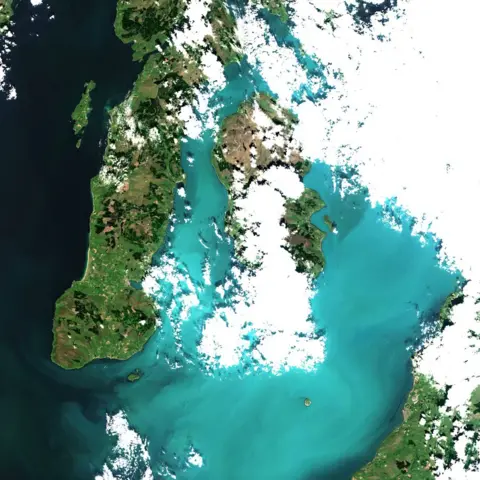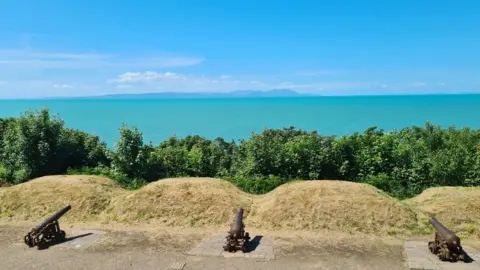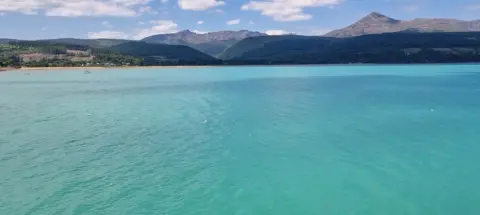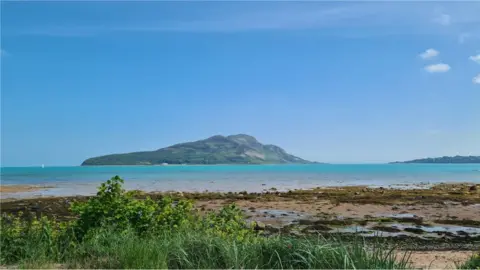Why has the sea off Scotland turned turquoise?
You'd be forgiven for thinking you're looking at a photo from the Mediterranean but this is Scotland's west coast around the Isle of Arran.
The vivid turquoise colour of the sea has captured the imaginations of those living nearby with many taking to social media for answers.
In the absence of any known samples being analysed, experts think it is a coccolithophore bloom.
 Fiona Carswell
Fiona CarswellIn layman's terms, it is a type of microscopic marine algae living in large numbers in the upper layer of the sea.
You cannot see them with the naked eye, but these spherical cells under a powerful microscope are surrounded by intrinsic tiny disc-shaped platelets known as coccoliths.
It is the shedding of these white calcium carbonate plates - which can turn into chalk - that transforms the sea into that photogenic aquamarine colour.
Think about the sun hitting the water and bouncing off brilliant white particles just under the surface.
 NEODAAS
NEODAASSatellite images capturing the phenomenon have also been posted on social media by scientists who study the oceans from a birds eye view. They too believe it's a coccolithophore bloom.
So we have a good sense of the what, but what about the why?
Dr Paul Tett, from the Scottish Association for Marine Science (SAMS), has been studying algae for five decades and says what we've been seeing is rare in coastal waters.
 Cat McKenzie
Cat McKenzieThe last time he saw this level of colour intensity in Scottish waters was in the 1980s, he said.
"The coccolithophores are very common on the high seas in the North Atlantic, for example, and in the southern ocean," Dr Tett said.
"They are probably the second most common kind of phytoplankton group in the oceans."
 Chris Munro
Chris MunroDr Tett said he was not quite sure why it was now happening off Scotland's west coast.
"My best guess is that some water from the North Atlantic has come on to the Mallin shelf, which is the sea between Ireland and the west of Scotland.
"Some of it has gone into the Firth of Clyde and some has gone up the Minch and that has brought the bloom of coccoliths with it."
 Lynsey McBurnie
Lynsey McBurnie In the SAMS laboratory in Oban there are hundreds of samples of algae suspended in jars.
Tiny they may be, but insignificant they are not: the health of algae populations is growing more significant in the battle against climate change because of their relationship with CO2.
Dr Tett said: "The good news is these little algae are one of nature's ways of reducing carbon dioxide in the atmosphere because the calcareous plates take up carbon dioxide from sea water and when they sink to the bottom they are removing it from the sea and the atmosphere."
But as we see throughout the natural world, life is all about balance, and too much of a "good thing" can prove detrimental.
 Grant Lauchlan
Grant LauchlanWhile algae is important in capturing carbon - a contributor to global warming - too much algae can cause acidity in the water, which poses other problems for marine life.
Despite some algae blooms being harmful, scientists do not believe this bloom is.
If anything with many of us kissing goodbye to sunny getaways this summer because of the pandemic, this is just the picture postcard we need.
